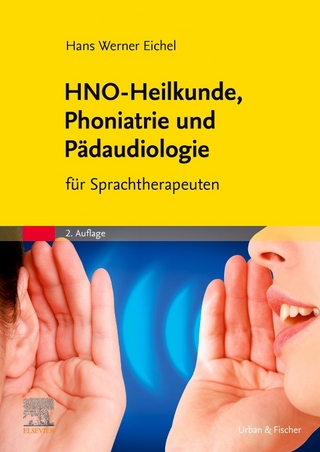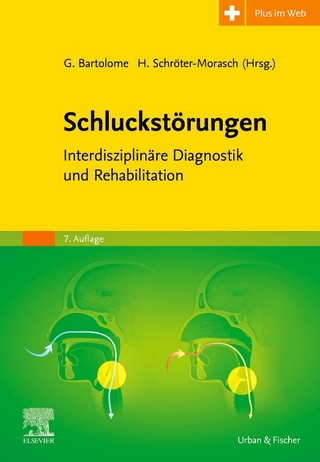
Supporting Individuals Who Use Augmentative and Alternative Communication
Plural Publishing Inc (Verlag)
978-1-63550-391-3 (ISBN)
Individuals with complex communication needs who use Augmentative and Alternative Communication (AAC) frequently encounter barriers that limit their ability to achieve their full potential in communication and in life. These barriers include access barriers (limitations in the current capabilities of the AAC user or the communication systems that they use) as well as opportunity barriers (e.g., policy, practice, knowledge/skill, and attitude barriers that extend beyond the AAC user). It is essential to consider both access and opportunity barriers when designing systems and supports for individuals who use AAC. However, often the emphasis of research and practice is on addressing issues related to access barriers with far less attention to opportunity barriers. Supporting Individuals Who Use Augmentative and Alternative Communication: Breaking Down Opportunity Barriers is the first book to focus specifically on practical strategies for breaking down opportunity barriers experienced by individuals who use AAC.
The text is divided into four sections, with each section devoted to a frequently encountered opportunity barrier (knowledge/skill, practice, attitude, and policy). Within each section, readers will (a) develop a deeper understanding of the impact of the barrier through the eyes of individuals who use AAC or their families, (b) acquire knowledge based on current research and recommended practices related to addressing the barrier, and (c) learn how professionals have successfully addressed the barrier via case examples from the field. The final chapter provides readers with information (as well as tools and examples) about how to go "beyond the book" and actively address the unique opportunity barriers they encounter.
Key Features
Includes in-depth interviews with individuals who use AAC and their families
Identifies evidence-based and promising practices for addressing opportunity barriers
Provides tips, tools, and resources for addressing opportunity barriers
Illustrates successful strategies for addressing opportunity barriers through case examples and step-by-step guidelines for implementation
Includes contributions from professionals in the field who have successfully addressed opportunity barriers in home, school, workplace, and community settings
Who Should Read This Book
This book is designed to support those who find themselves frustrated by the opportunity barriers experienced by individuals who use AAC and are searching for ways to break down those barriers, including people who rely on AAC, speech-language pathologists, special education teachers, occupational therapists, physical therapists, family members, university students, faculty in higher education, and other professionals in school, healthcare, and community settings.
Susan S. Johnston, PhD, SLP is a professor in the Department of Special Education at the University of Utah and is the program area coordinator for Early Childhood Special Education. She has been with the University of Utah since 1997. She received her MA and Ph.D. in Speech-Language Pathology from the University of Minnesota in Minneapolis, MN. As a speech-language pathologist, she worked in early intervention, preschool special education, and elementary school settings. Prior to coming to Utah, Dr. Johnston was an Assistant Professor in the Department of Special Education at Eastern Michigan University in Ypsilanti, MI. Dr. Johnston's research and teaching focuses on evidence-based strategies and supports for individuals with complex communication needs, and she is first author on a book titled, AAC Strategies for Individuals With Moderate to Severe Disabilities. **** Cindy Gevarter, PhD, BCBA-D is an assistant professor in the Department of Speech and Hearing Sciences at the University of New Mexico. She received a B.A. in psychology from the University of Virginia (UVa), an M.T. in special education from UVa, and a Ph.D. in early childhood special education from the University of Texas at Austin. As a special education teacher and early interventionist, she primarily worked with children with autism spectrum disorder (ASD) and developmental disabilities who had complex communication needs. Her research and teaching interests include ASD, augmentative and alternative communication (AAC), naturalistic early communication interventions, interdisciplinary collaboration, and communication partner training. **** Samuel Sennott, PhD is an associate professor of special education and leads the Universal Design Lab in the College of Education at Portland State University. Dr. Sennott is a research scientist focused on fundamental mechanisms to communication and language acquisition, community based participatory research approaches and AAC, single-case design research practices and tools, and assistive technologies. As a hands-on teacher and practitioner, Dr. Sennott envisioned and co-created the original Proloquo2Go application. He holds a Ph.D. in Special Education and AAC from The Pennsylvania State University. **** Lateef McLeod, MFA earned a BA in English from UC Berkeley, an MFA in Creative Writing from Mills College, and is currently in his sixth year of study at the Anthropology and Social Change Doctoral program at California Institute for Integral Studies in San Francisco. His dissertation will explore how young people who use AAC gain leadership and advocacy skills through peer mentoring. Lateef was a consumer consultant for Dynavox from 2007 to 2011. He was also the vice president for people who use AAC on the ISAAC executive board from 2016 to 2020. He published his first poetry book entitled A Declaration of A Body Of Love in 2010 and published his second poetry book entitled Whispers of Krip Love, Shouts of Krip Revolution in 2020. He recently co-authored another book of poetry called Studies in Brotherly Love in 2021. **** Eric J. Sanders, PhD, CCC-SLP is an associate professor in the Speech-Language Pathology program in the Department of Rehabilitation Sciences at Moravian University. He earned his MS and PhD in Speech and Hearing Sciences at the University of North Carolina at Chapel Hill. As a speech-language pathologist, Dr. Sanders worked for the Miami-Dade County Public Schools and in private practice. In those roles, he specialized in working with children who required augmentative and alternative communication. Dr. Sanders' research focuses on service provision and language and literacy development for individuals who require AAC and those with intellectual disabilities. Additionally, he studies the scholarship of teaching and learning with a focus on graduate education in speech-language pathology.
Preface
About the Authors
Contributors
Section I. Understanding and Addressing Knowledge/Skill Barriers
Chapter 1. Knowledge/Skill Barriers: Learning From Individuals Who Use AAC and Their Families
Susan S. Johnston, Vanessa J. Ince, and Cas McNamara
Chapter 2. Knowledge/Skill Barriers: Exploring the Evidence Base
Susan S. Johnston, Cheri Wild Blue, Adele F. Dimian, Ashley R. McCoy, Jessica J. Simacek, and Melinda R. Snodgrass
Chapter 3. Knowledge/Skill Barriers: Studying Successful Case Examples
Susan S. Johnston, Adele F. Dimian, Ashley R. McCoy, Jessica J. Simacek, and Melinda R. Snodgrass
Section II. Understanding and Addressing Practice Barriers
Chapter 4. Practice Barriers: Learning From Individuals Who Use AAC and Their Families
Cindy Gevarter, Cassandra Medrano, and Tona Rivera
Chapter 5. Practice Barriers: Exploring the Evidence Base
Cindy Gevarter
Chapter 6. Practice Barriers: Studying Successful Case Examples
Cindy Gevarter, Jennifer W. Hanson, Stephanie M. McDougle, and Mariah Siciliano
Section III. Understanding and Addressing Attitude Barriers
Chapter 7. Attitude Barriers: Learning From Individuals Who Use AAC and Their Families
Samuel Sennott, Lateef McLeod, Eric J. Sanders, Jay Grochala, Kevin Williams, and Jamie Preece
Chapter 8. Attitude Barriers: Exploring the Evidence Base
Eric J. Sanders, Samuel Sennott, and Lateef McLeod
Chapter 9. Attitude Barriers: Studying Successful Case Examples
Eric J. Sanders, Lateef McLeod, Samuel Sennott, David J. Hajjar, Joanne K. Niemkiewicz, Krista Howard, Caroline Ramsey Musselwhite, and Brandi Wentland
Section IV. Understanding and Addressing Policy Barriers
Chapter 10. AAC Policy Barriers: Learning From Individuals Who Use AAC and Their Families
Lateef McLeod, Eric J. Sanders, Samuel Sennott, India Ochs, and Bob Williams
Chapter 11. Policy Barriers: Exploring the Evidence Base
Samuel Sennott, Lateef McLeod, and Eric J. Sanders
Chapter 12. Policy Barriers: Studying Successful Case Examples
Eric J. Sanders, Samuel Sennott, Lateef McLeod, Christina Royster, Gretchen Hanser, Caroline Ramsey Musselwhite, and Monica Kaniamattam
Conclusion
Chapter 13. Individualizing the Approach to Breaking Down Barriers
Susan S. Johnston
| Erscheinungsdatum | 07.02.2023 |
|---|---|
| Verlagsort | San Diego |
| Sprache | englisch |
| Maße | 178 x 254 mm |
| Themenwelt | Medizin / Pharmazie ► Gesundheitsfachberufe ► Logopädie |
| ISBN-10 | 1-63550-391-4 / 1635503914 |
| ISBN-13 | 978-1-63550-391-3 / 9781635503913 |
| Zustand | Neuware |
| Haben Sie eine Frage zum Produkt? |
aus dem Bereich


